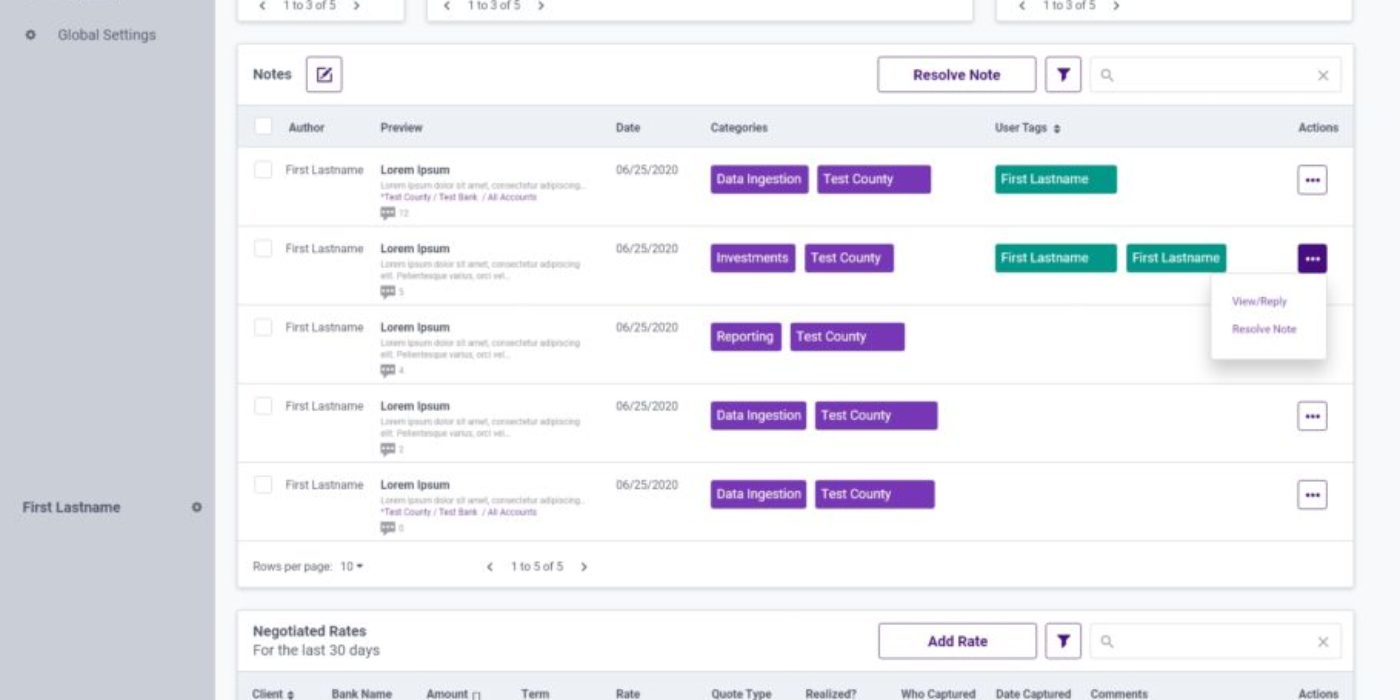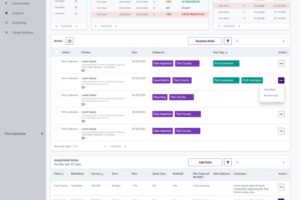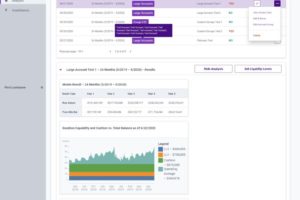Problem Statement
Three + One approached us with their existing software platform composed of multiple individual tools and processes. Their process spanned multiple stand alone internal tools and manual processes, coupled with third party platforms to manage their business operations. Faced with the already present challenge of operating their current day-to-day workloads, and the oncoming challenge of needing to scale up their business, they sought our assistance to modernize their platform into a more unified, cohesive experience.
Solution
Over roughly 11 sprints (two weeks per sprint) we worked to understand their current business practices and their ideal future state. I served as the lead ui/ux designer for the project while also assisting management along with an internal leadership troika composed of our principal project manager, lead developer, and business analyst. As an interdisciplinary leadership troika, we helped mitigate project risk in that there was enough knowledge being shared among the four of us that if someone was absent for a reason, the other three would likely know enough of what needed to be done to proceed.
The Three + One project leadership team was vitally involved in our weekly sprint activities and rituals. Early on we set clear expectations with them on things like common language, meeting frequency, cadence, and responsibility for approvals. This helped both internal and external parties clearly understand expectations and commitments as we proceeded.
Over multiple working sessions, we worked with the Three + One team to better understand the complexity of their current state. Then I helped our product team solution to streamline the process, and we would iterate on this solutioning with Three + One, working towards a lighter flow with fewer manual processes.
I was able to lead regular whiteboarding sessions when working on new modules. This co-creative approach helped us gain traction quickly when testing our early assumptions following requirements/solutioning. Into design and prototyping, we would continue this collaborative approach so we could test our assumptions early on and make adjustments as needed.
Three Pillars: Data Ingestion, Analysis, Reporting
During the process we identified Three + One’s business operational needs and ways to improve their daily practice. By giving them a unified tool featuring automations and easier paths to ingest data, we streamlined their process and helped eliminate additional risk from human error. Various dashboards helped give internal users of different levels visibility into key statuses and metrics as data transitioned from ingestion, to analysis, and then finally to reporting.
We also established clear process-flow stages to the data ingestion, analysis, and reporting pillars. This helped to clarify user tasks and user wayfinding throughout the application. The overall effort to streamline and better unify their new platform would allow their team to more easily scale and onboard new team members.
Personas: Aligning and Reframing Assumptions
I drafted this set of personas early in our kickoff phase to help better align our assumptions with actual user needs. We worked with the client over a few working sessions to better understand the goals of different users and roles who would be working with the future portal. This step was very helpful as we were able to better frame user flows and journeys from the perspectives of these personas.
Testing & Refinement: Data Ingestion and Reporting
During testing of the Data Ingestion feature of the application, we identified with the client that our original setup was too complex and could be simplified. Due possibly to the complexity of mentally scoping out data ingestion and an abundance of care, our initial assumptions in designing the data ingestion pillar involved the user selecting an ingestion template on each import. Having templates available would save the user some time from needing to manually map columns for import each time.
We learned in testing that requiring a user to select a template on each import was still too slow and not enough of an improvement from their existing workflow. Using what we learned from the current data ingestion feature and a better understanding of the system as it was taking shape, we realized the system could auto assign templates based on the format of the headers in the incoming files. This would allow the user to perform bulk ingestions of multiple files in batches, which was identified early on as a sought after feature. With a better understanding of the current needs and capabilities, I drafted updated an updated workflow to represent the new steps in the data ingestion sequence.
The Reporting workflow saw updates based on feedback from testing as well. Partly from adjusting expectations for MVP and taking user preferences into account, we determined that reporting would be accomplished partly by the system generating a first pass reporting document that the user would then download, edit, and reupload to the system for posterity. Previously we had been aiming for a report-generator-wizard tool, but scope and expectations needed to be adjusted.













